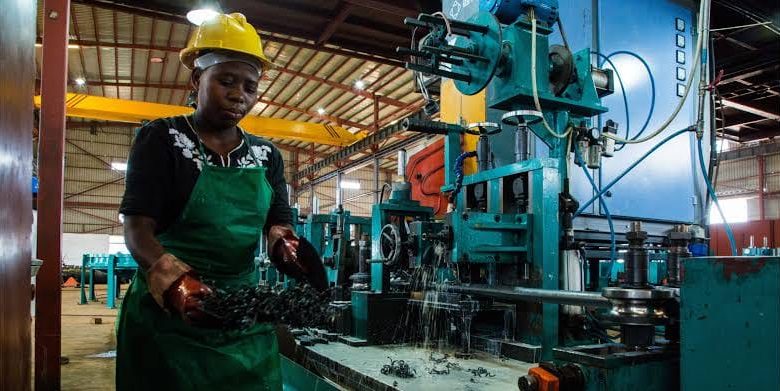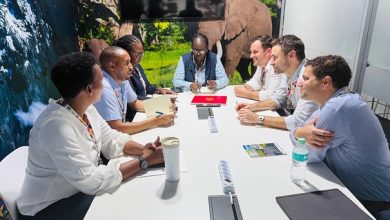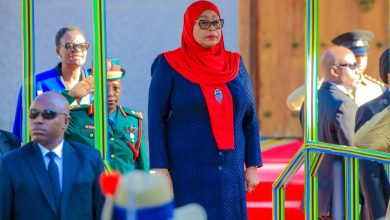Why industrial parks could be game-changer

DAR ES SALAAM: AHEAD of October 29 General Election, one issue rises above all others: Jobs. Every political party knows that young people, who make up the majority of voters, want answers to unemployment.
Promises range from expanding agriculture to boosting small businesses, but one proposal stands out for both its scale and its realism: The ruling CCM’s pledge, through its candidate President Samia Suluhu Hassan, to build industrial parks. This is not just campaign talk. The groundwork has already been laid.
At the end of July, President Samia launched three major projects within two days: Freight operations on the Standard Gauge Railway (SGR) from Dar es Salaam to Dodoma, the Kwala Dry Port to decongest the port and the foundation stone for the Kwala Industrial Park. Seen together, these are not photo opportunities.
They are pieces of a bigger puzzle connecting transport, trade and industry into a system that can reshape Tanzania’s economy.
The scale of what’s promised is eye-catching. The Kwala Industrial Park alone is expected to create 50,000 direct jobs and another 150,000 indirectly, many of them for young people now hustling in the informal sector. But the real story goes beyond jobs.
The park will host factories that add value to what Tanzanians already produce spinning cotton into clothes, turning milk into processed dairy and preparing fish and legumes for export.
By processing at home rather than shipping raw goods abroad, Tanzania can keep more value in the country, raise farmer incomes and strengthen domestic industries.
It’s a vision that mirrors the UN’s Sustainable Development Goals and the African Union’s Agenda 2063, both of which call for inclusive, youthdriven industrial growth. CCM has doubled down on this idea in its 2025 manifesto.
The party has pledged not just one or two parks, but industrial parks in every region and every district.
If that promise is kept, it would mark one of the most ambitious industrialisation programmes in East Africa moving industry from a few urban centres to communities across the country.
For voters, the message is clear: This is not a Dar es Salaam-only story. Skeptics are right to ask whether such ambition is realistic. Yet experiences from across Africa suggest it can be done.
ALSO READ: Jafo: Coast region grows into industrial hub
Ethiopia’s industrial parks, though imperfect, have created tens of thousands of jobs in less than a decade.
Rwanda’s Kigali Special Economic Zone has attracted over 100 companies.
Kenya’s export processing zones now employ more than 50,000 people directly.
The lesson is simple: Industrial parks work when governments provide infrastructure and policy certainty. Tanzania today has both. The SGR is the game changer.
It has cut freight time between Dar es Salaam and Dodoma from more than ten hours by road to less than four by rail.
The Kwala Dry Port, directly linked to the railway, can handle over 800 containers a day reducing congestion at Dar Port by almost a third.
And with trains able to replace as many as 1,000 trucks daily on the highway, Tanzania saves money on road repairs, reduces fuel costs, lowers accidents and eases the traffic jams that the World Bank estimates drain more than 4bn/- a day from the economy.
This is the kind of backbone that gives industrial parks a fighting chance. Politically, timing matters.
Tanzanians have heard job promises in every election. What makes this one different is that it is already being rolled out.
President Samia has been clear that government cannot employ everyone, but it can prepare the ground for opportunity.
Industrial parks, supported by rail and dry ports, are exactly that fertile ground where private investors can plant and young people can find work.
Of course, challenges remain. Stable electricity, skilled workers and strong regulation are all needed if these parks are to succeed. But the risks of inaction are greater.
With more than 800,000 young people entering the labour market each year, Tanzania cannot afford to stand still.
Without industries to absorb them, unemployment and underemployment will weigh heavily on the economy and society. That is why this promise carries real weight.
It fits Tanzania’s Vision 2050, which aims for industry to contribute more than 30 per cent of GDP.
It builds on the country’s strengths in agriculture, resources and geography.
And by committing to build parks in every region and district, CCM is signalling a shift toward inclusive industrialisation that touches not just the capital or the coast, but every part of the country.
As the campaigns gather pace, Tanzanians will hear many promises.
But when it comes to jobs and the future of work, few ideas are as concrete as this.
Industrial parks create employment, attract investment, raise incomes and connect Tanzania more firmly to regional trade.
Backed by the SGR and other infrastructure, they are not just viable they are necessary for a country on the road to 2050.
Mr Paschal Qeresh is an independent political consultant based in Dar es Salaam.





